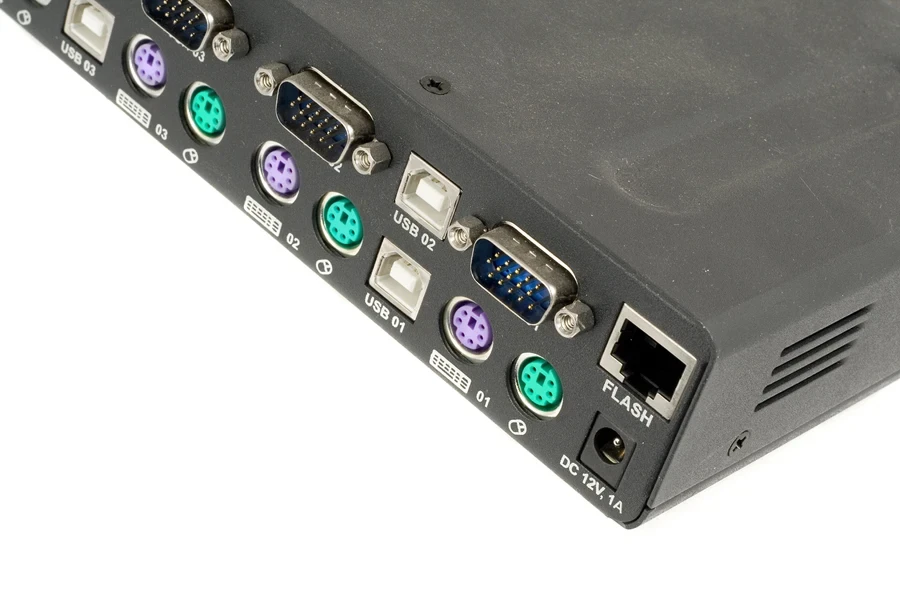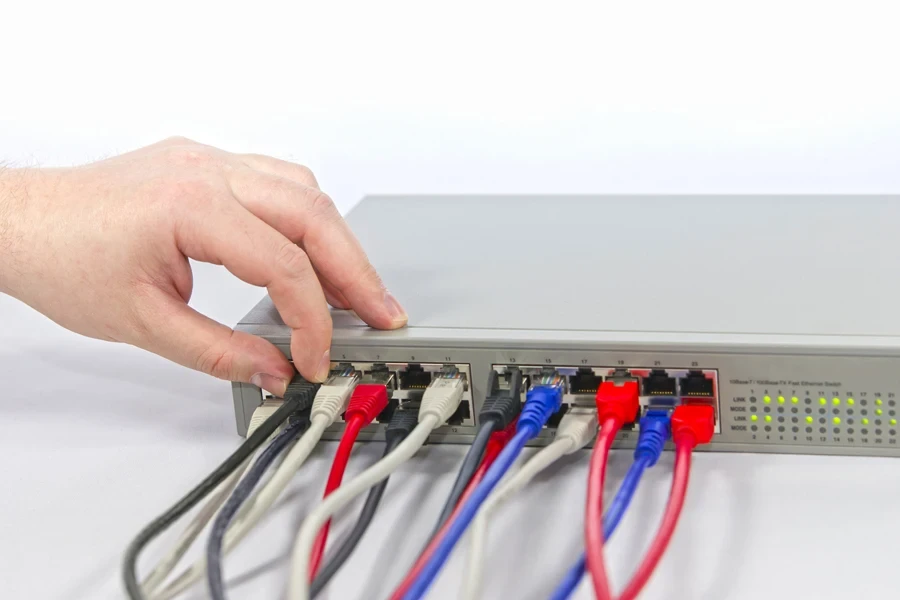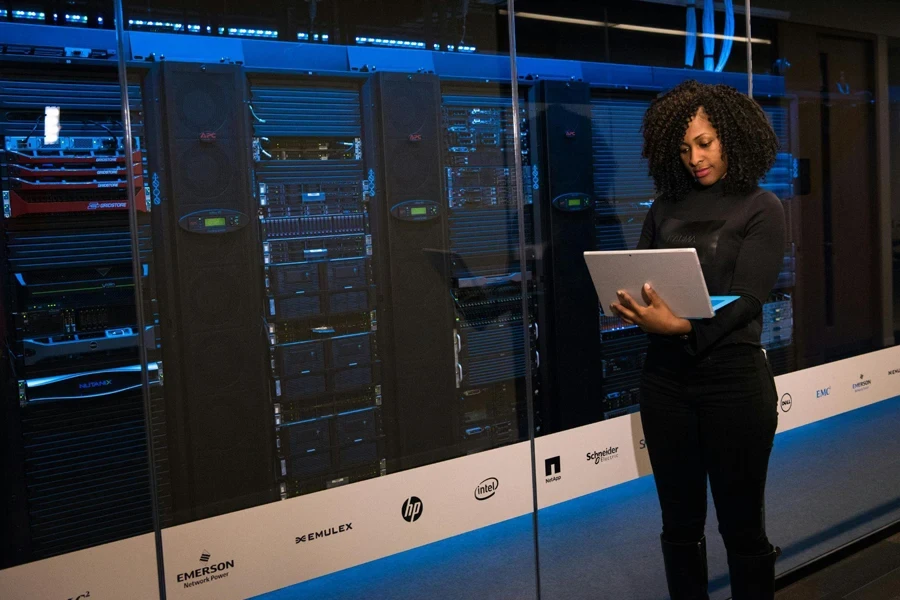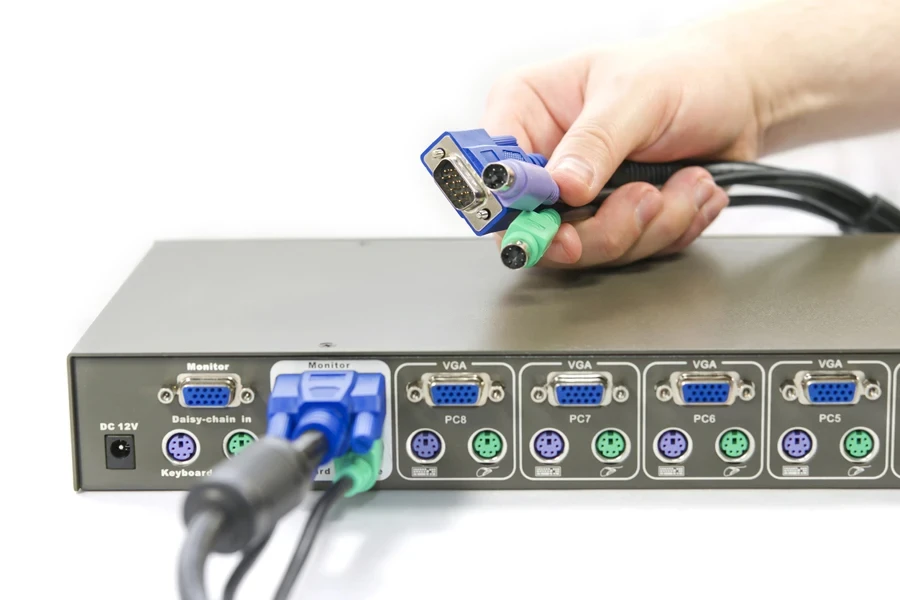Many workers – 66% worldwide, according to one report – must juggle multiple devices at home or the office for maximum productivity. While switching between devices is often necessary, it can be a hassle, leading to workspace clutter and unused wires.
Thankfully, KVM (keyboard, video, and mouse) switches can help reduce such clutter, streamlining the workplace and improving workflow. In this guide, we will walk retailers through primary considerations when stocking KVM switches as well as tips on how to market them effectively.
Table of Contents
An overview of the KVM switch market
What are KVM switches?
5 KVM switch features to consider before stocking
4 strategies to help businesses market KVM switches
Conclusion
An overview of the KVM switch market
Experts valued the KVM switch market at USD 2.39 billion in 2024 and predict it will grow at a 7.04% CAGR to USD 4.12 billion by 2032. The market’s growth is believed to be the result of the rising use of smart KVM solutions in industrial settings, the increased adoption of KVM over optical fibers, and the devices’ energy-efficient and space-saving benefits.
Here are some more stats to note:
- Multi-user KVM switches registered the most demand in 2023, accounting for approximately 66.2% of total revenue
- North America is also the largest regional market, with a 43.6% global KVM switch market share
- The United States contributed the most to North America’s dominance and is expected to grow fastest over the forecast period
What are KVM switches?

KVM switches are handy devices that let consumers control multiple computers using one keyboard, mouse, and monitor. Think of them as traffic police for workspaces, directing signals between consumers’ peripherals and computers; with a KVM switch, users can quickly move between systems at the push of a button without disrupting their operations.
However, the number of computers that can be controlled at one time depends on a KVM switch’s available ports. Usually, they come with two to four ports, which is generally enough for standard work setups.
KVM switches are also popular search-wise. According to Google data, they received 135,000 searches on average in 2024, up 20% from 2023’s average of 110,000 searches.
What is KVM over IP?
KVM over IP switches let consumers control multiple computers or servers from anywhere with an internet connection. They are invaluable for growing networks, making server management more efficient, and saving time. This makes them ideal for IT professionals in data centers and anyone requirding remote access.
5 KVM switch features to consider before stocking
1. Number of source computers and USB peripheral devices

The number of ports on a KVM switch determines how many computers, servers, or devices consumers can connect and control. Usually, users will already know how many computers they need to manage as well as the type of USB devices (like keyboards, mice, or gamepads) they’ll use to control them.
For example, if consumers have a work and gaming PC at home that they want to control with the same peripheral set, they will need a KVM switch with at least two USB-B and three USB-A ports. But more complex setups (like a data control center) often feature a larger number of computers, requiring control via a single KVM console and therefore a switch with many more USB ports.
2. Video type and resolution

KVM switches can also work with various video connections, such as HDMI, DisplayPort, USB-C, DVI, and VGA. The supported video connection will usually depend on the specific model retailers stock: some switches can handle multiple types, while others may only support HDMI. Consumers can also use adapters to connect different kinds of video sources that aren’t supported by certain switches.
Another essential consideration is video resolution, which varies between devices. Some KVM switches can handle up to 4K UHD at 30hz, directly or over IP. Business buyers should offer analog switches for consumers who want high-resolution support, as they often provide better resolution than many digital options.
3. Number of users

How many people require access to a KVM switch will also affect which switch size to buy. For example, smaller 4-user models can handle multiple servers, while more advanced KVM systems may allow hundreds of users to control thousands of servers simultaneously.
In this latter instance, businesses can offer KVM over IP solutions, which offer more flexibility, power, and scalability than traditional switches.
4. Switching and control method

Many KVM switches have easy-to-use buttons on the front panel, making it simple to switch between connected computers. Some models also support switching via IR remote or keyboard hotkeys, adding even more convenience. Additionally, some KVM over IP solutions let users control everything from their PC or mobile app, giving consumers flexibility in how they manage their setup.
4 strategies to help businesses market KVM switches
1. Highlight “hidden costs”
To market KVM switches effectively, focus on long-term savings. Highlight how these devices reduce costs by minimizing the need for multiple workstations as well as reducing energy consumption. Businesses should also emphasize their ability to streamline workflows and boost productivity, showcasing their value as a cost-effective, space-saving solution.
2. Leverage visual demonstrations
Visual demonstrations are another great way to market KVM switches. Businesses can use instructional videos and interactive demos to help customers understand the product’s ease of use and versatility. Additionally, showcasing how KVM switches simplify tasks and enhance productivity can engage audiences, making the product more appealing and driving sales.

3. Target niche markets
While almost anyone stands to benefit from a KVM switch, targeting specific niche markets can help retailers maximize their reach. For instance, campaigns focused on scalability and reliability will appeal more to data centers, while focusing on ease of use and affordability is a better angle for marketing to home workspaces and small businesses. Retailers can even target educational institutions by emphasizing the benefits of using KVM switches when sharing resources and allowing collaboration.
4. Offer customization and bundling options
Retailers can also consider offering custom KVM switch configurations to meet specific customer needs. For example, retailers can allow consumers to order KVM switches with different port counts, cable lengths, and other additional features to match their preferences.
Additionally, businesses can package KVM switches with complementary products, like cables, adapters, or peripherals, to increase sales.

Conclusion
KVM switches may not be needed for every computer user, but anyone who regularly works on multiple devices stands to benefit from their convenient design and utility. However, when stocking such devices, you must remember that different users have varying needs, so make sure to weigh these up to ensure you offer what your target consumers want.



